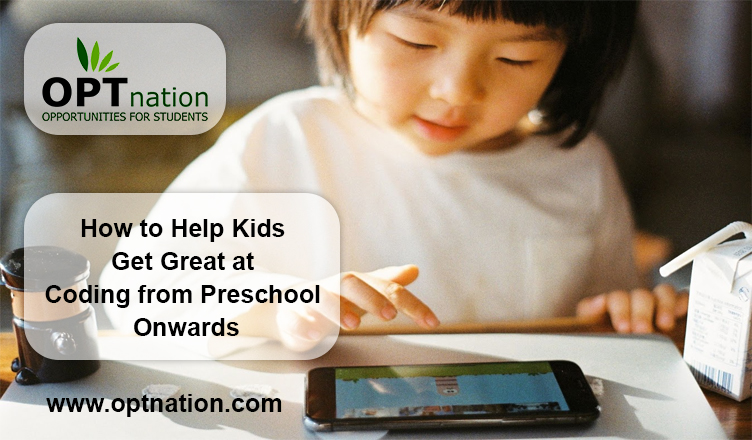As our world increasingly intertwines with technology, coding has become a critical skill akin to reading and writing. For today’s preschoolers, learning to code is not just about future job prospects. It’s about shaping their ability to interact with the world around them.
Starting this journey early can set a strong foundation for logical thinking, problem-solving, and creativity. But how do you translate such a complex subject into child’s play? This guide will show you effective strategies to help your little ones embrace coding with excitement.
7 Ways Help Kids Get Great at Coding from Preschool Onwards
Embarking on the coding adventure can be thrilling for kids, even from preschool. Here are 7 ways to nurture their interest and skills in coding, ensuring a smooth and enjoyable journey.
1. Start with Simple Concepts sequential
Diving into the world of coding doesn’t have to be complex. Begin by laying a foundation with simple concepts that preschoolers can grasp. Talk about algorithms in terms they understand, like the steps in their morning routine, to illustrate sequential logic in mathematics.
Discuss patterns by sorting toys or creating bead necklaces, showing how code follows repeated rules. These activities prime young minds for understanding the structured nature of programming without overwhelming them. It’s about making abstract ideas tangible.
2. Incorporate Play-Based Learning
When it comes to children, learning and play go hand in hand. By incorporating play-based learning into your child’s journey into coding, you harness their natural curiosity and creativity.
Use puzzles that challenge their logic or toys that can be programmed to move or make sounds—these are not just fun activities but also subtle introductions to the world of code. It’s through this kind of playful exploration that kids learn the joy of creating something all by themselves, which is at the very heart of what coding and programming is about.
3. Take Advantage of Online Coding Games
Online coding games are a treasure trove for young learners. They combine the excitement of gameplay with educational content, making the learning process captivating and interactive.
Engaging your child with these games can spark an interest in technology that might bloom into a lifelong passion. If you’re not sure where to start, you can find games here. This site will introduce your child to preschool learning games that are both fun and challenging.
Keep in mind that these platforms often use colorful graphics and simple drag-and-drop interfaces, which are perfect for little hands still developing fine motor skills.
4. Encourage Problem-Solving Skills
Coding is not just about writing lines of code. It’s a constant exercise in problem-solving. Help your child understand that encountering bugs is a normal part of the learning process.
Instead of stepping in to fix issues immediately, encourage them to think critically about what might be going wrong. Ask guiding questions to nudge them toward the solution, fostering independence and confidence in their abilities, both while coding and doing other things.
This approach instills a mindset of resilience and persistence, key traits for any successful coder to have as they navigate through the complexities of technology.
5. Join a Coding Community
Belonging to a coding community can significantly enhance your child’s learning experience.
By connecting with others on the same journey, they gain exposure to a variety of perspectives and problem-solving techniques. Look for local clubs, workshops, or online forums that welcome young coders and encourage your child to participate. You can start by searching Facebook.
In these settings, they’ll have the chance to collaborate on projects, share successes, and learn from setbacks in a supportive environment. The camaraderie and shared excitement found in these communities can be incredibly motivating and affirming for a budding coder.
6. Make Use of Visual Programming Languages
Visual programming languages like Scratch are a boon for young learners, making coding more accessible and less intimidating. These platforms use colorful blocks that snap together to create programs, which helps children understand the structure and flow of code.
By using visual programming, your child can focus on the logic and sequence of their code. It’s an engaging way to build confidence as they drag, drop, and assemble blocks that control characters, create games, and tell stories through their very first programs.
7. Set Up Regular Coding Time
Consistency is key when learning a new skill, and coding is no exception. To foster this growth, establish regular coding times for your child each week. This routine reinforces the skills they’re developing and treats coding as an important part of their life, much like homework or chores.
During these sessions, make sure the environment is free from distractions so they can fully immerse themselves in their projects. With time, these consistent practice periods will not only improve their proficiency but also help them view coding as a fun and rewarding activity.
In Conclusion…
Your child’s coding adventure starts now, and the path they’re about to embark on is filled with exciting challenges and endless possibilities. By embracing these tips, you’re preparing your children for a future in tech and unlocking doors to creative expression and critical thinking.
So why wait? Begin these steps today and watch your child grow from a curious learner to a confident coder, ready to take on the digital world. Your support and encouragement are the keystones of their success—fuel their journey into coding starting today!

